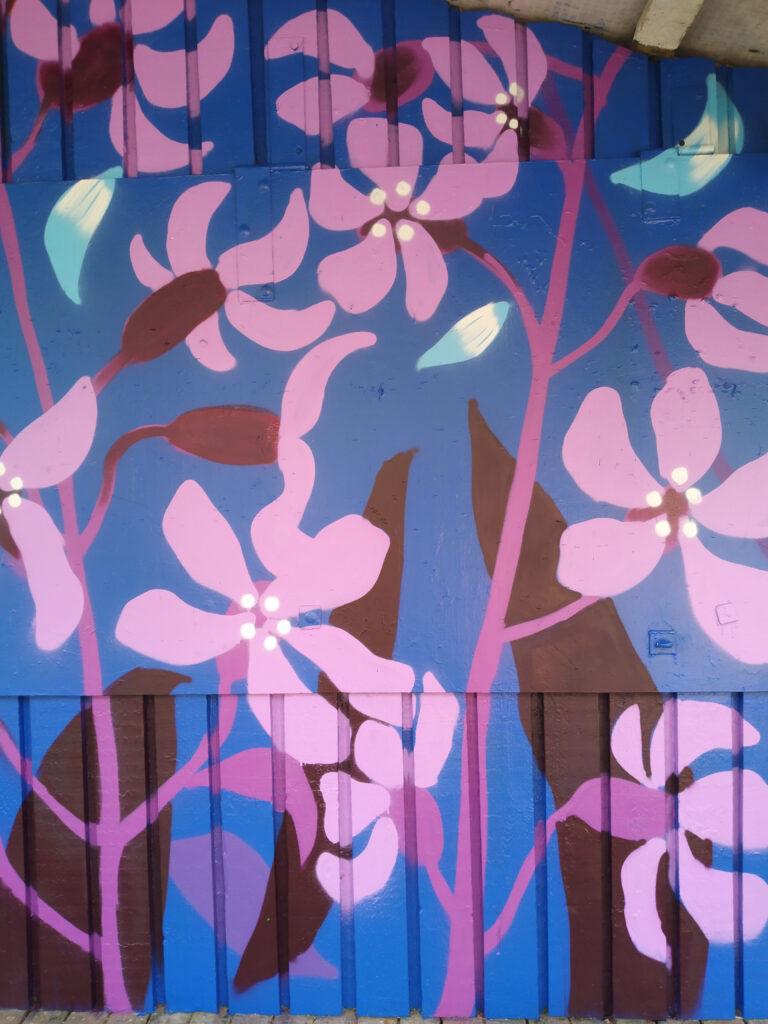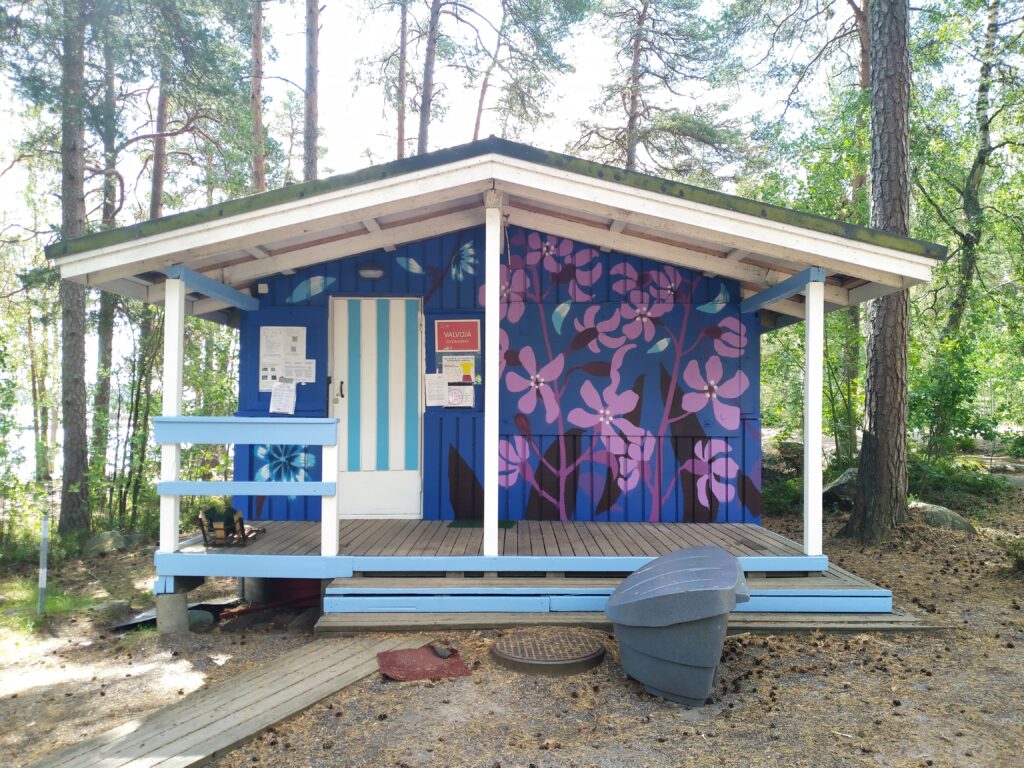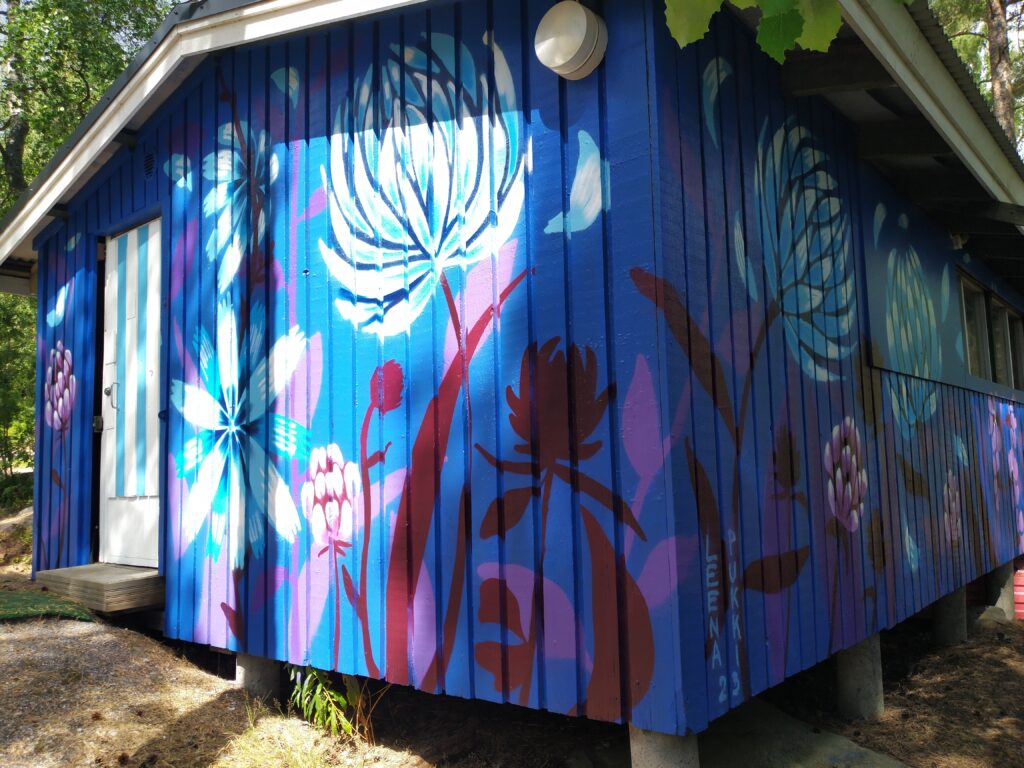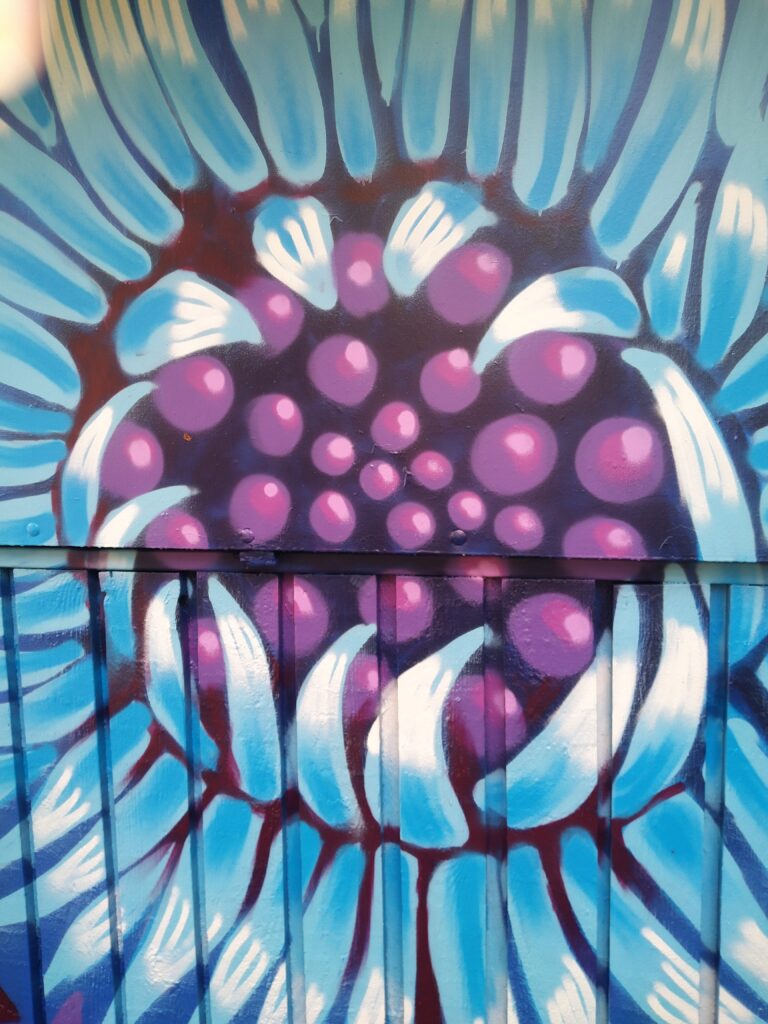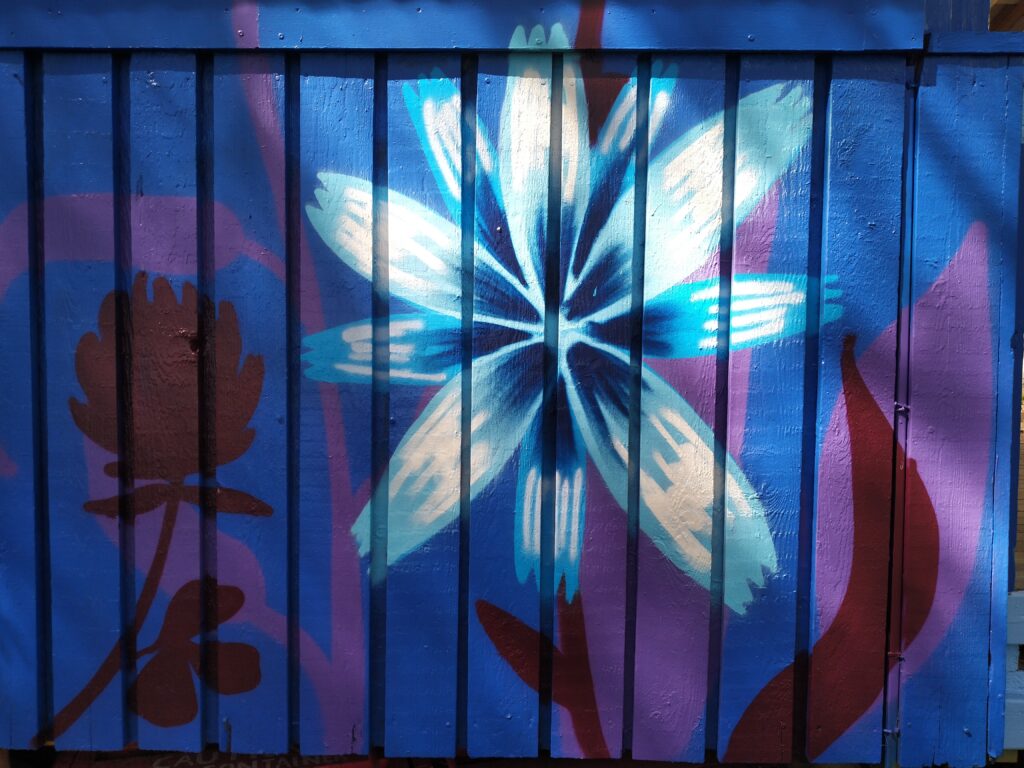SEA GARDEN
2023, Wall paint and spray paint. 14 m x 2,5 m
The flowers depicted in the painting are Sheeps-bit Jasione montana, Common Chicory (Cichorium intybus), Red Clover (Trifolium pratense) and Sticky Catchfly (Viscaria vulgaris). All of these flowers are food sources for pollinators and are particularly popular among them for their nectar.
Pollinators such as bees play an important role in food production and the entire ecosystem, but their populations have been declining at an alarming rate.
According to the Finnish Food Authority: Habitat loss is a key reason for the decline in pollinator populations. According to a study conducted for Finland's National Pollinator Strategy, the main reason for the threat to pollinator species, especially beekeepers and butterflies, is the overgrowth of meadows and other open habitats. Butterfly and fly species that specialize in peatlands have suffered from drainage. Construction, logging, the reduction of fire areas, invasive species and climate change also have a negative impact on our pollinator species. The well-being of pollinators could be improved by increasing their habitats, such as meadows.
The work was created as part of the Mimmit peinttaa collective's Sea Garden project. The Sea Garden spreads across the walls of all the buildings on the Matinkylä beach.
The artists in the working group were Elina Holley, Pia Iiramo, Minttu Pyykkönen and Leena Pukki. Rosa Hultman was the producer. Elina Holley created the concept of the artwork.
The work received an honorary mention in the 2023 Hurraa! Award from the Espoo Environment and Building Board and the Espoo Building Inspectorate.

